Ciabatta Bread Recipe
This Ciabatta Bread Recipe produces an artisan loaf with a crisp crust and light, chewy crumb full of big jagged holes. This is the perfect loaf for making panini, or just tear off a hunk and dip it in olive oil.
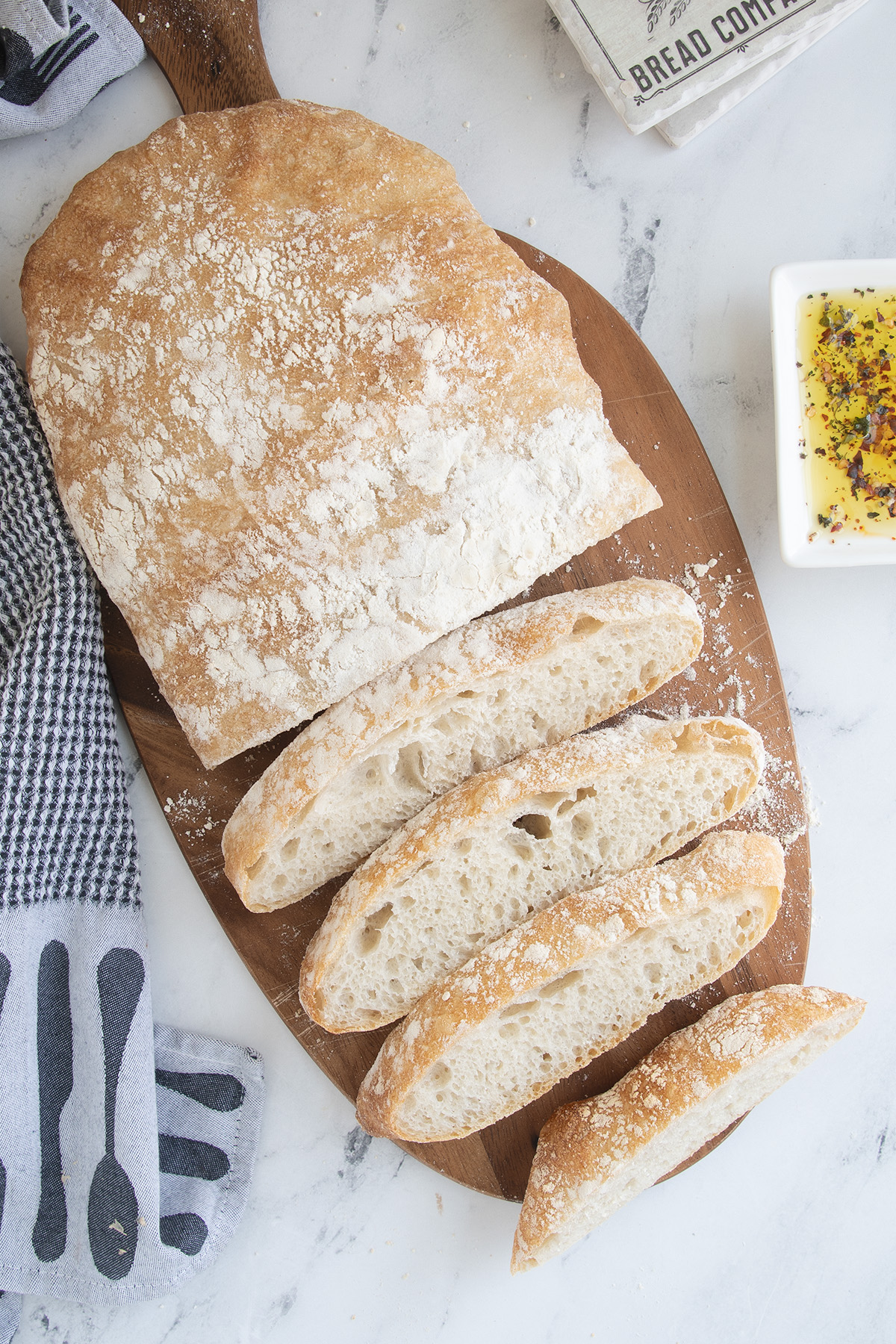
Table of contents
Why you’ll love this recipe
This recipe has just 4 simple ingredients, including water!
You will need to start the recipe a day ahead to make the “biga”. Biga is a pre-ferment. That is, a piece of dough that’s is allowed to ferment for up to 24 hours before you make the final dough.
In a yeast-risen dough, the preferment performs similar functions as a sourdough starter. The long fermentation of the biga slightly acidifies the dough.
Acidity strengthens the dough, which allows it to hold onto large air bubbles despite the high hydration (90%). Acidity also improves the keeping quality of the bread and adds a layer of complexity to the flavor.
This is a very wet dough that can be a bit tricky to handle. The good news is that the loaf is supposed to be kind of free form so don’t worry if it doesn’t look so pretty going into the oven.
Watch the recipe video to see how to gently handle the dough to avoid loosing the air bubbles when the dough is shaped.
Ingredients
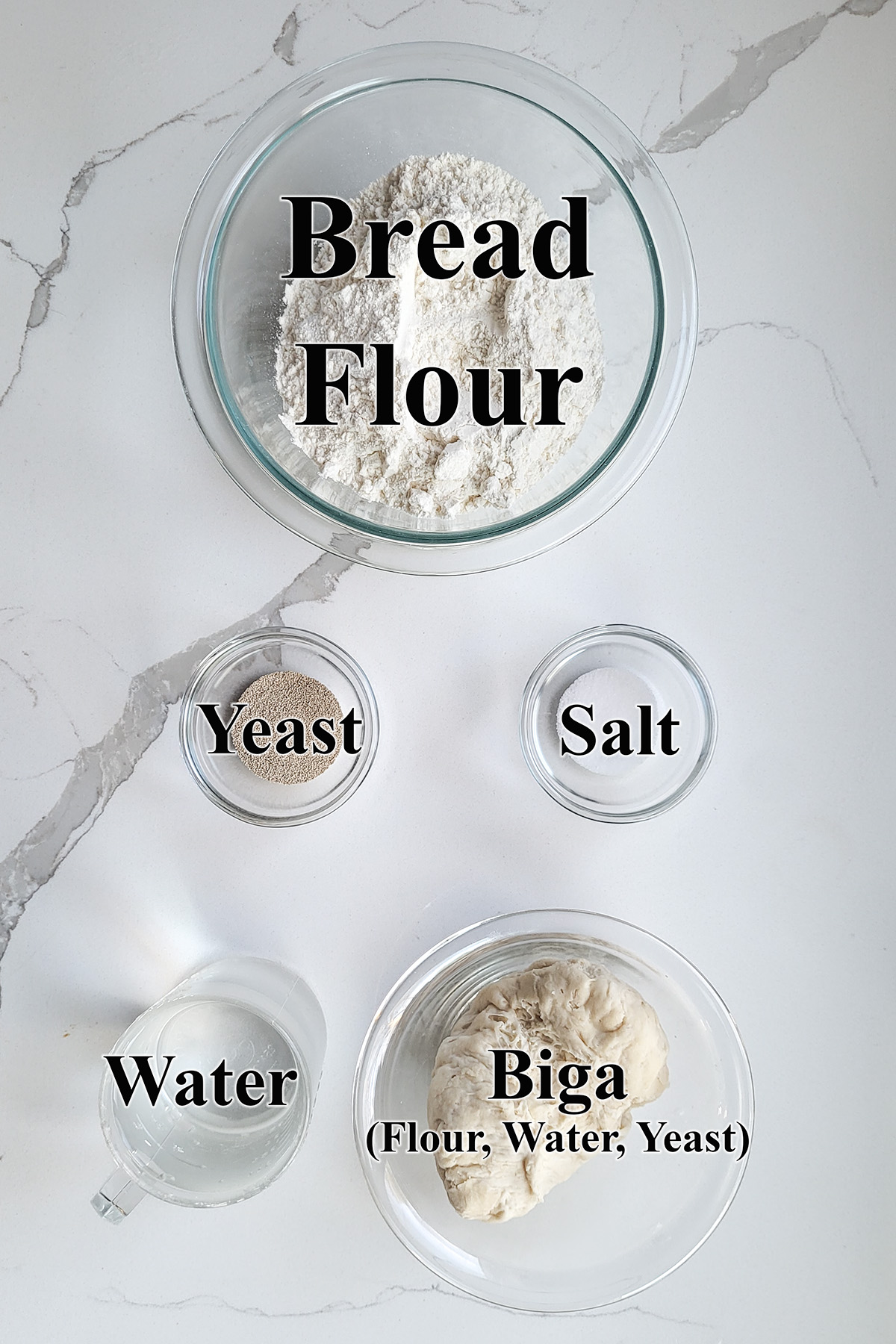
Ingredient Notes
- Biga – Is a “preferment” made from flour, a smidge of yeast and water. The biga is made up to 24 hours before mixing the dough and adds complexity to the flavor.
- Bread Flour – This dough has a high percentage of water (90% hydration) so you need high protein bread flour to form enough gluten to give the dough structure.
- Yeast – I prefer instant yeast to rapid rise yeast for a slightly slower rise. A slower rise gives more time for flavor to develop.
How to make Ciabatta Bread
See the recipe card for detailed measurements and instructions.
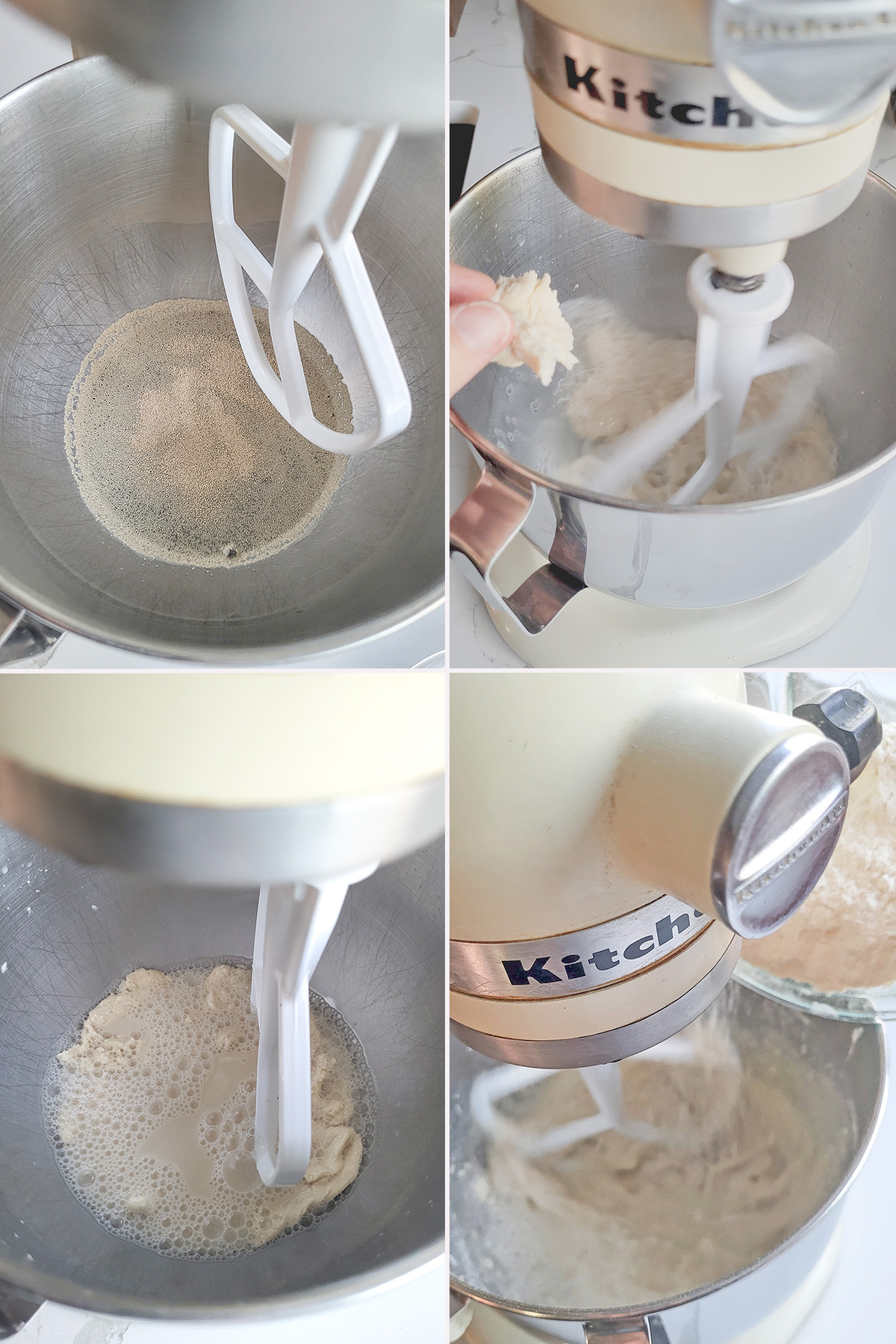
- Make the biga 12-24 hours before you plan to make the dough. Combine warm water and yeast in a mixer bowl.
- With the mixer running, toss in chunks of the biga.
- Add the flour and salt.
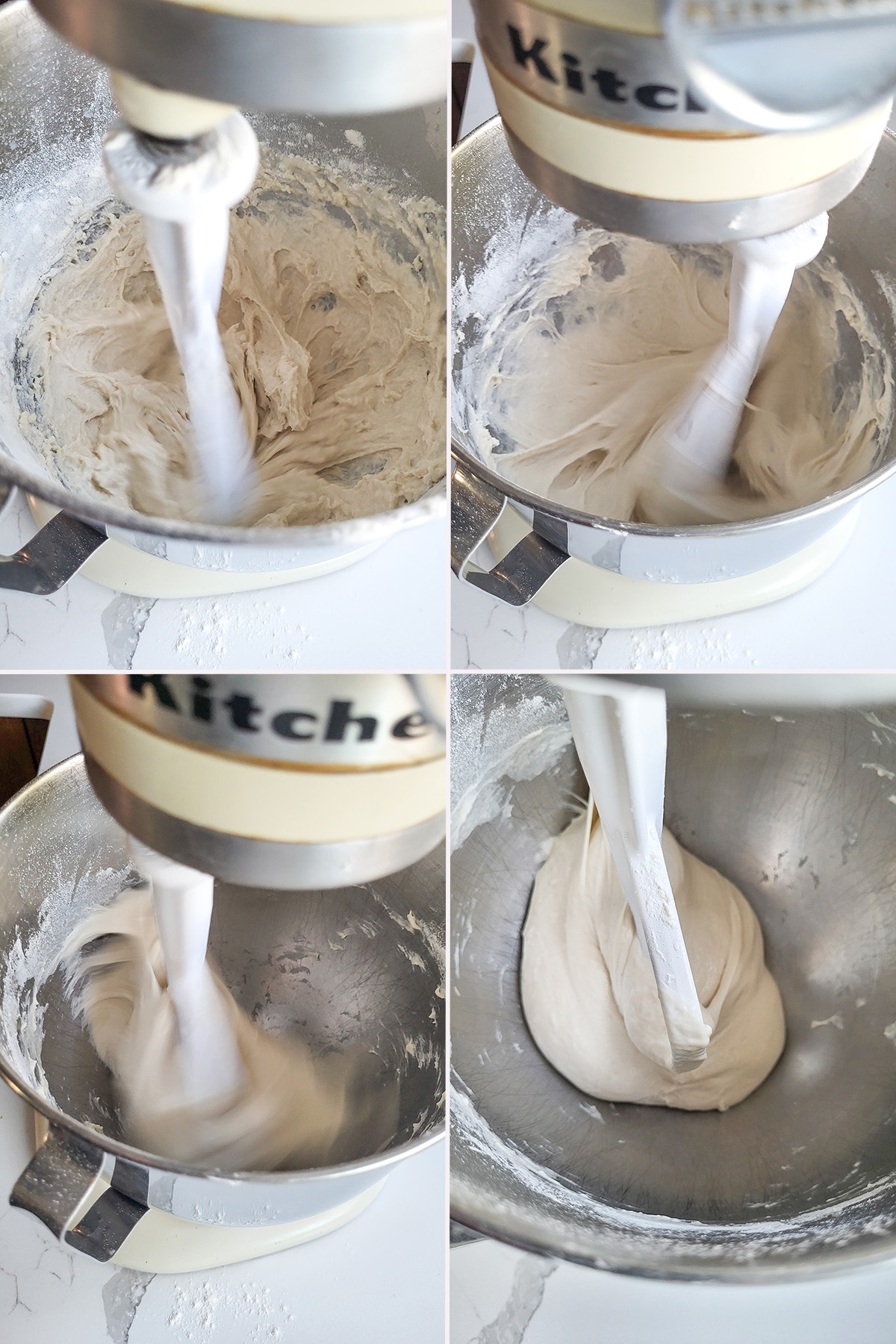
- Mix the dough for 5 minutes on medium high speed.
- At first the dough will be quite sticky and shaggy.
- As the gluten develops, the dough will begin to gather on the paddle.
- The dough is ready when it gathers on the paddle and clears the sides of the bowl.
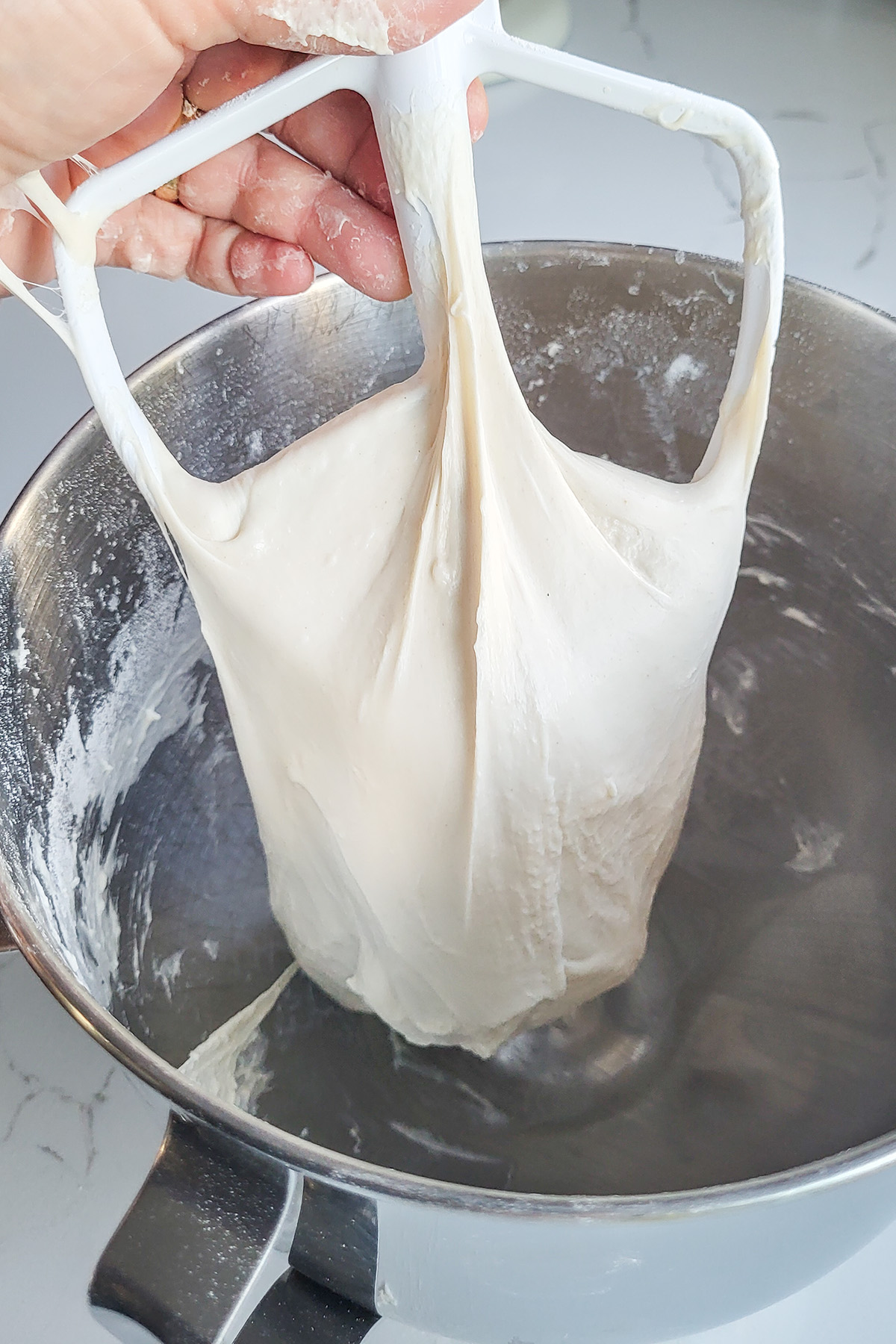
- The dough should be silky and elastic after kneading.
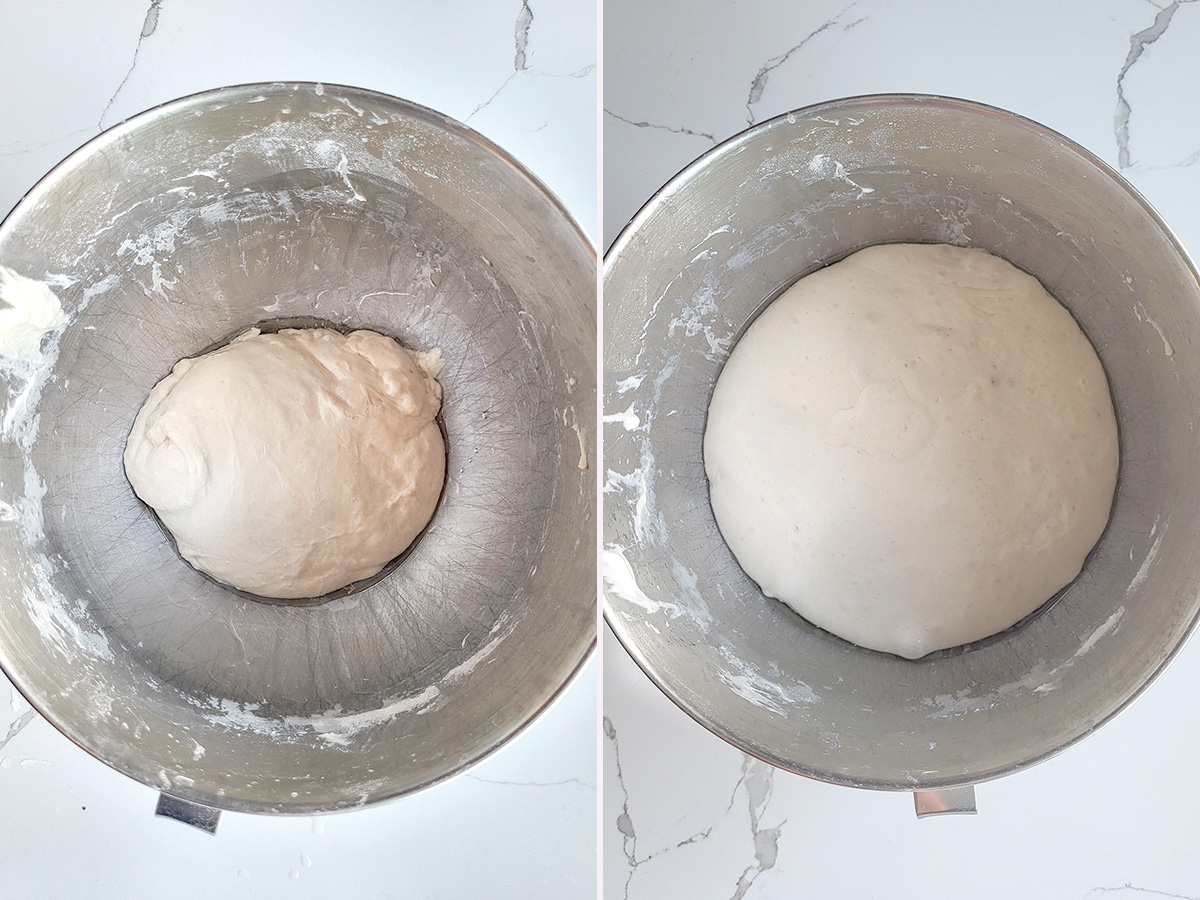
- Transfer the dough to an oiled bowl. Cover and set aside for 1 – 1 1/2 hours.
- When the dough has doubled in volume, you’re ready to shape the loaf.
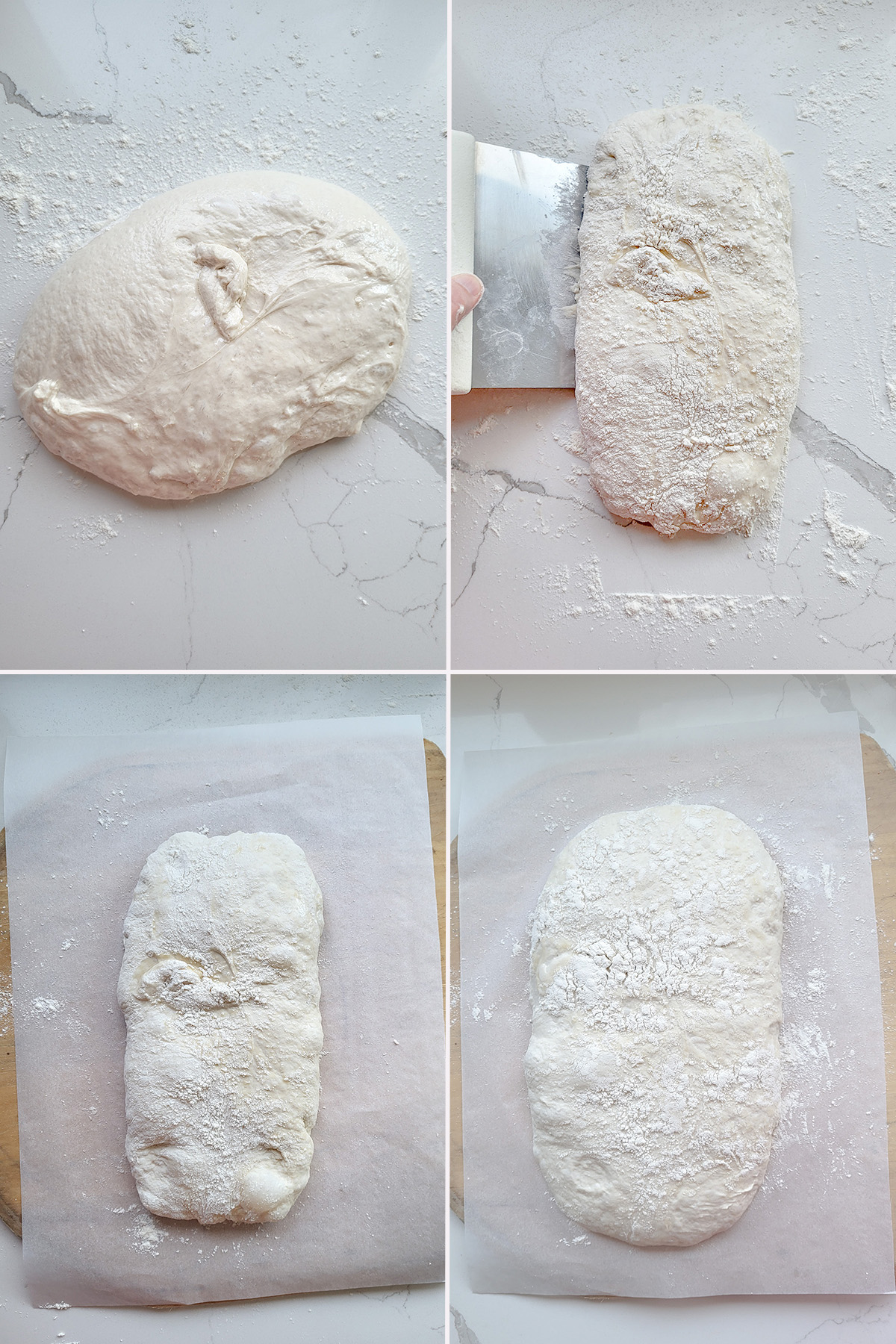
- Gently turn the dough out onto a well-floured surface. Do not knead. You want to keep the air bubbles in the dough.
- Using well-floured hands and a bench scraper or spatula, gently shape the dough to approximately 10″x 4″ rectangle.
- Transfer the loaf to a sheet of parchment paper. Slide the paper onto a baking sheet or peel. Cover and set aside for 1 – 1 1/2 hours. Meanwhile, preheat the oven.
- When the loaf is almost doubled in size slide the loaf into the oven and bake until golden brown and crisp.
Recipe Tips
- For this recipe I don’t recommend using volume (cup) measurements. Weighing your ingredients is the best way to ensure accuracy. This is a very wet (high hydration) dough and even a small shift in the amount of flour could throw off the texture of the bread.
- If you have a baking stone or steel this is a good time to use it for the crispiest crust.
- Introducing steam into the oven helps make a thin and crisp crust on the bread.
Storage
Ciabatta Bread is best the day it’s baked but will keep at room temperature for a day. Leftovers can be frozen for up to a month.
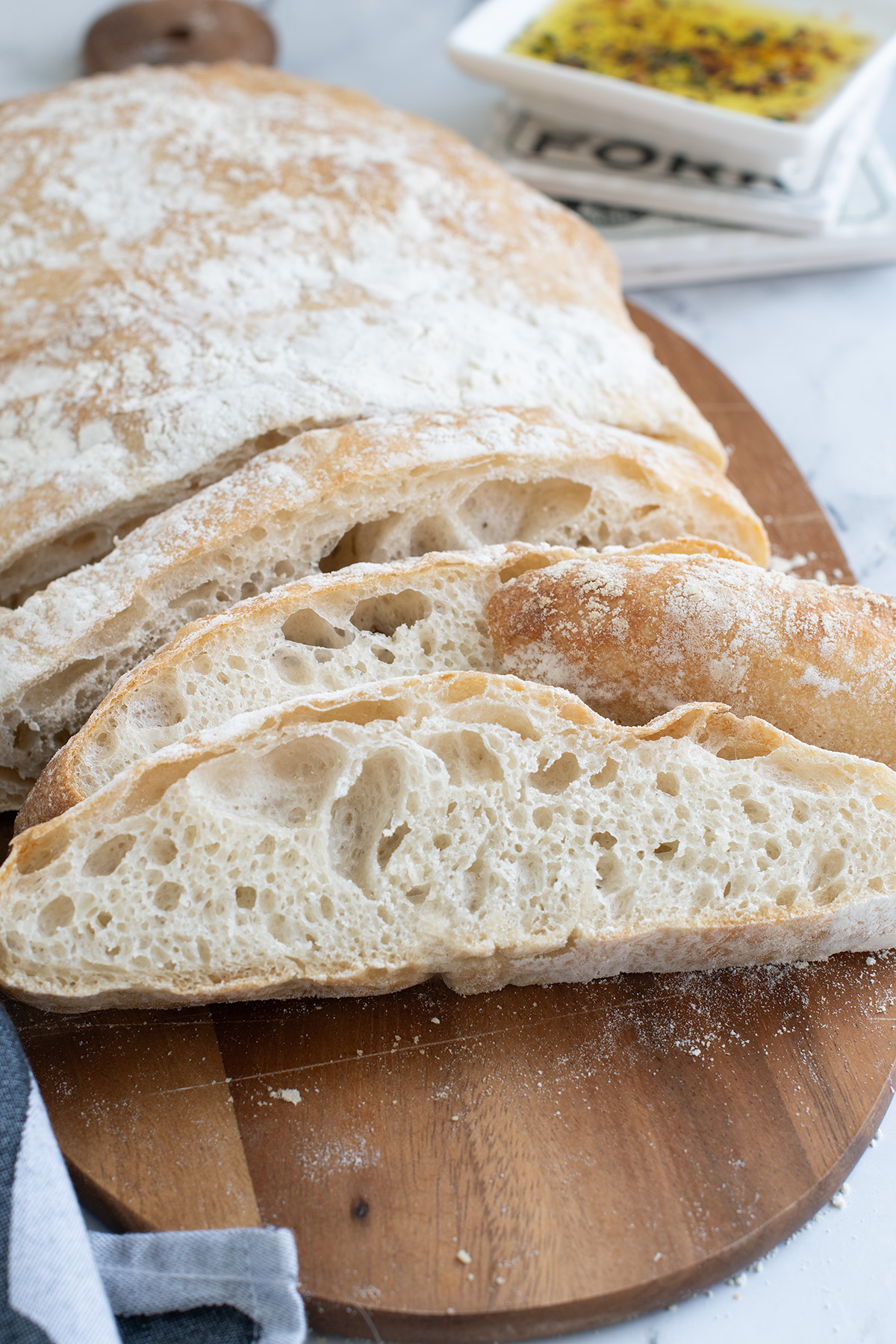
If you love this recipe as much as I do, I’d really appreciate a star rating and a quick comment. Ratings and comments help my recipes show in search results. Thanks!
Ciabatta Bread
Ingredients
Biga
- 2 oz warm water
- ¼ teaspoon dry yeast
- 3 ¾ oz unbleached bread flour
Dough
- 7 oz warm water
- 2 teaspoons dry yeast
- Biga from day 1
- 6 ¼ oz unbleached bread flour
- 1 teaspoon table salt
Instructions
Biga
- In a small bowl, combine 2 oz warm water with ¼ teaspoon dry yeast. Stir in 3 ¾ oz unbleached bread flour, a little at a time, until you can no longer mix by hand. Turn the biga out onto a lightly floured surface and knead in the remaining flour. Return the dough to the bowl, cover it with plastic wrap and set it aside for at least 12 hours and up to 24 hours.
Dough
- Combine 7 oz warm water and 2 teaspoons dry yeast in a mixer bowl. With the paddle attachment and the mixer running, add chunks of the Biga from day 1 to the water and mix to break down the biga dough. The mixture will look very raggedy. It will come together during the kneading process. (It is possible to mix this dough by hand but with such a wet dough you'll have to use a wooden spoon to vigorously stir the dough since it's too wet to knead.)
- With the mixer running on low, add 6 ¼ oz unbleached bread flour and 1 teaspoon table salt. Continue mixing on low until the dough comes together. It will be quite soft and sticky. Increase the speed to medium high and mix for 5 minutes. The dough should gather on the hook and clear the sides of the bowl.
- Scrape the dough into a lightly oiled bowl. Cover and set aside in a warm place to double in volume, about 1½ – 2 hours.
- Have a half sheet of parchment paper or a silicone baking mat ready to receive the loaf after it's shaped.
- Carefully turn the risen dough out onto a generously floured surface. Sprinkle the top of the dough with flour. Use well-floured hands to form the dough into a 10" x 4" rectangle. Carefully transfer the dough to the parchment sheet and use your hands to push the sides of the dough to reform the rectangle. Lightly sprinkle the loaf with flour and cover the dough. Let it rise for about 1-1½ hours. The dough is ready when the loaf looks very puffy and is almost doubled in size.
- Preheat the oven to 450 °F. Place a baking stone or steel in the oven if you're using one. Put a small pan at the bottom of the oven to preheat.
- When the dough is ready slide the parchment paper with the dough onto a baking sheet or, if you're using a baking stone or steel slide the loaf onto the back of the baking sheet. Slide the pan with the loaf into the oven or slide the paper with the loaf onto the baking stone. Pour a ½ cup of hot water into the pan at the bottom of the oven. Immediately close the oven to trap the steam. Bake about 15 minutes until puffed and golden brown.
- Transfer the loaf to a cooling rack and cool to room temperature.
Would you like to save this recipe?
As an Amazon Associate and member of other affiliate programs, I earn from qualifying purchases.

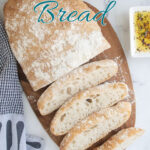
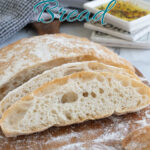
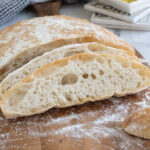






Bread sounds excellent! I am so glad to see ingredient weights; Baker’s percentages would be a nice touch.
I list the ingredients for all of my recipes by weight. Usually I provide the volume measurements in the notes as a courtesy, but for this recipe I didn’t because with a 90% hydration dough you need to be accurate with the flour and volume measure doesn’t work well with flour.
I’m anxiously awaiting the SD version of this recipe!
I just taste tested it today and it soooo good. A really crisp crust and moist, craggly crumb. I’ll try to get it posted asap.
Thanks, much appreciated!